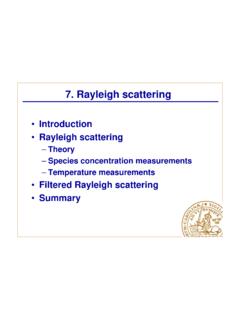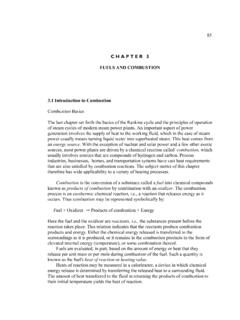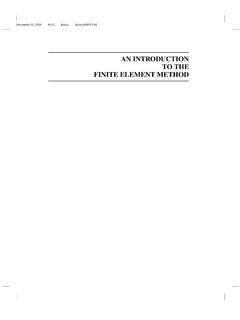Transcription of Unsteady Combustor Processes - cefrc.princeton.edu
1 Unsteady Combustor Processes Tim Lieuwen Affiliation: Professor School of Aerospace Engineering Georgia Institute of Technology Email: Ph. 404-894-3041 2018 Summer School on combustion Copyright 2018 by Tim LieuwenThis material is not to be sold, reproduced or distributed without prior written permission of the owner, Tim Lieuwen2 Copyright T. Lieuwen 2013 Unauthorized Reproduction Prohibited References Course Outline A) introduction and outlook B) Flame Aerodynamics and Flashback C) Flame Stretch, Edge Flames, and Flame Stabilization Concepts D) Disturbance Propagation and Generation in Reacting Flows E) Flame Response to Harmonic Excitation (1 hours) (1 hours) (3 hours) (3 hours) (1 hours) 3 Copyright T. Lieuwen 2013 Unauthorized Reproduction Prohibited Key course themes Physical/Chemical Processes Unsteady combustion Processes Operational limits of combustion devices.
2 Course Outline A) introduction and Outlook B) Flame Aerodynamics and Flashback C) Flame Stretch, Edge Flames, and Flame Stabilization Concepts D) Disturbance Propagation and Generation in Reacting Flows E) Flame Response to Harmonic Excitation Constraints and metrics Emissions Autoignition Future outlook for needed research 4 Copyright T. Lieuwen 2013 Unauthorized Reproduction Prohibited Course Outline A) introduction and Outlook B) Flame Aerodynamics and Flashback C) Flame Stretch, Edge Flames, and Flame Stabilization Concepts D) Disturbance Propagation and Generation in Reacting Flows E) Flame Response to Harmonic Excitation Constraints and metrics Emissions Autoignition Future outlook for needed research 5 Copyright T. Lieuwen 2013 Unauthorized Reproduction Prohibited Brayton Cycle Inlet Compressor Combustor Turbine Nozzle Pr= Compressor Pressure Ratio 6 Copyright T.
3 Lieuwen 2013 Unauthorized Reproduction Prohibited Gas Turbine Cycle Compressor Turbine Combustor Inlet Exhaust 1 3 2 4 Source: 8 Copyright T. Lieuwen 2013 Unauthorized Reproduction Prohibited Role of Combustor within Larger Energy System Conclusions Combustor has little effect upon cycle efficiency ( fuel > kilowatts) or specific power Combustor does however have important impacts on Realizability of certain cycles , steam addition, water addition, EGR, etc. Engine operational limits and transient response Emissions from plant RatioThermal EfficiencyMicroturbineHeavy frame Gas Aeroengine Example: Ideal Brayton Cycle th = 1- (Pr)-( -1)/ Pr = compressor pressure ratio = Cp/Cv, ratio of specific heats 9 Copyright T. Lieuwen 2013 Unauthorized Reproduction Prohibited Combustor Performance Metrics W hat are important Combustor performance parameters?
4 Burns all the fuel Ignites Pattern Factor Operability Blow out combustion instability Flash back Autoignition Low pollutant emissions Fuel flexibility Good turndown Transient response Fuel Air Premixed vs Non-Premixed Flames Premixed flames Fuel and air premixed ahead of fla me Mixture stoichiometry at flame can be controlled Method used in low NOx gas turbines (DLN systems) Non-premixed flames Fuel and air separately introduced into Combustor Mixture burns at f=1 , stoichiometry cannot be controlled Hot flame, produces lots of NOx and more sooting More robust, higher turndown, simpler 10 Copyright T. Lieuwen 2013 Unauthorized Reproduction Prohibited Fuel Air Fuel Air Global fuel/air ratio controlled by turbine inlet temperature requirements Staging used to achieve turndown and stable flame Air is axially staged in this image Nonpremixed flame in primary zone 11 Copyright T.
5 Lieuwen 2013 Unauthorized Reproduction Prohibited Conventional Diffusion/Non-Premixed Flame Combustor T Turbine inlet temperature Combustor Configurations Dry, Low NOx (DLN) Systems Premixed operation If liquid fueled, must prevaporize fuel (lean, premixed, prevaporized, LPP) Almost all air goes through front end of Combustor for fuel lean operation little available for cooling Multiple nozzles required for turndown 12 Copyright T. Lieuwen 2013 Unauthorized Reproduction Prohibited T Premixed Nonpremixed Can combustion Layout Needs cross-fire tubes Useful testing can be done with limited air supplies Annular Combustor Layout Aircraft engines Aero-derivatives Siemens V-series Alstom GT24 Frame Engine Layouts Can access combustors without requiring engine dissembly Silo combustors Aero-Derivative Combustors Combustor Configurations Dry, Low NOx (DLN) Systems More complicated staging schemes required for turndown Blowoff combustion Instabilities Turndown Emissions NOX, CO, CO2 Cost/ Complexity 18 Copyright T.
6 Lieuwen 2013 Unauthorized Reproduction Prohibited Tradeoffs and Challenges L. Witherspoon and A. Pocengal, Power Engineering October 2008 19 Copyright T. Lieuwen 2013 Unauthorized Reproduction Prohibited Alternative Fuel Compositions 20 Copyright T. Lieuwen 2013 Unauthorized Reproduction Prohibited Natural Gas Composition Variability Source: C. Carson, Rolls Royce Canada Useful Fuel Grouping Higher Hydrocarbons C2H6 - ethane C3H8 propane C4H10, .. C10H22 (decane, large constituent of jet fuel) C12H26 (dodecane large constituent of diesel fuel) H2 content Inerts N2 - Nitrogen CO2 Carbon Dioxide H20 Water autoignition, combustion instabilities, NO2 emissions flashback, combustion instabilities blowoff, CO emissions, combustion instabilities 22 Copyright T. Lieuwen 2013 Unauthorized Reproduction Prohibited Operability issues of low NOX technologies Power Example: Broken part replacement largest non-fuel related cost for F class gas turbines Industrial Residential Example: issues in EU with deployment of low NOX water heaters, burners Goy et al.
7 , in combustion instabilities in gas turbine engines: operational experience, fundamental mechanisms, and modeling, T. Lieuwen and V. Yang, Editors. 2005. p. 163-175. 23 Copyright T. Lieuwen 2013 Unauthorized Reproduction Prohibited Financial Times Power in Latin America 23 July 99, Issue 49 Daggers Drawn over Nehuenco The Patience of Chile s Colbun power company has finally run o ut o ver the co nti nued no n-performance of the Siemens-b ui lt Nehuenco generating pla nt. Exasperated by repeated break-downs at the new pla nt a nd under pressure from i ncreasi ng ly rel ucta nt i ns urers (a nd with lawsuits looking likely) the generator announced that it will not accept the $140m combined-cycle plant - built and delivered by the Germany equipment manufacturer. Sieme ns, together with Italy s Ansaldo, took the t ur nkey contract for the 350 MW pla nt in 1996 and s ho uld ha ve had it in service by May of last year.
8 The startup was delayed till January. Si nce the n matters ha ve worsened. T here ha ve been two major breakdowns and, says Colbun, there have been no satisfactory explanations. The tro uble co uld not ha ve come worse for Colbun. T he manly hydroelectric generator, w hic h is controlled by a consortium made up of Belgium s Tractebel, Spain s Iberdrola a nd t he local Matte and Yaconi-Sa nta Cruz groups, has been crippled by se vere droug ht in Chile, which has slashed its o utput a nd t hrow n it back w itho ut Nehuenco o nto a prohibitively expensive spot market. 24 Copyright T. Lieuwen 2013 Unauthorized Reproduction Prohibited 25 Copyright T. Lieuwen 2013 Unauthorized Reproduction Prohibited combustion Instabilities Single largest issue associated with development of low NOX GT s Designs make systems susceptible to large amplitude acoustic pulsations (Days)Normalized Load (%)26 Copyright T.
9 Lieuwen 2013 Unauthorized Reproduction Prohibited Turndown Operational flexibility has been substantially crimped in low NOX technologies Significant number of combined cycle plants being cycled on and off daily Transient Response Needs 0501001502002503000102030405060708090100 Time (minutes)% Normalized Load Locations with high penetration of wind and photovoltaic solar are seeing significant transient response needs Avoiding blowoff and flashback are key issues 28 Copyright T. Lieuwen 2013 Unauthorized Reproduction Prohibited Blowoff Low NOX designs make flame stabilization more problematic Industry Advisory June 26, 2008 Background: On Tuesday February 26th, 2008, the FRCC Bulk Power System experienced a system disturbance initiated by a138 kV transmission system fault that remained on the system for approximately seconds.
10 The fault and subsequent delayed clearing led to the loss of approximately 2,300 MW of load concentrated in South Florida along with the loss of approximately 4,300 MW of generation within the Region. Approximately 2,200 MW of under-frequency load shedding subsequently operated and was scattered across the peninsular part of Florida. Indications are that six combustion turbine (CT) generators within the Region that were operating in a lean-burn mode (used for reducing emissions) tripped offline as result of a phenomenon known as turbine Combustor lean blowout. As the CT generators accelerated in response to the frequency excursion, the direct-coupled turbine compressors forced more air into their associated combustion chambers at the same time as the governor speed control function reduced fuel input in response to the increase in speed.
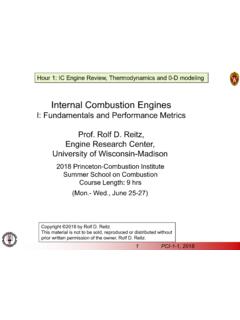


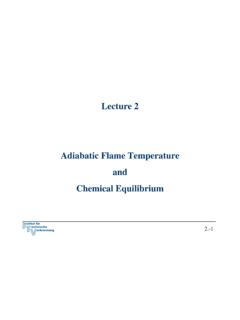
![Lecture 8 Raman [Kompatibilitetsläge]](/cache/preview/d/b/6/8/9/c/e/c/thumb-db689cecbc617a8952df49950b757eeb.jpg)
